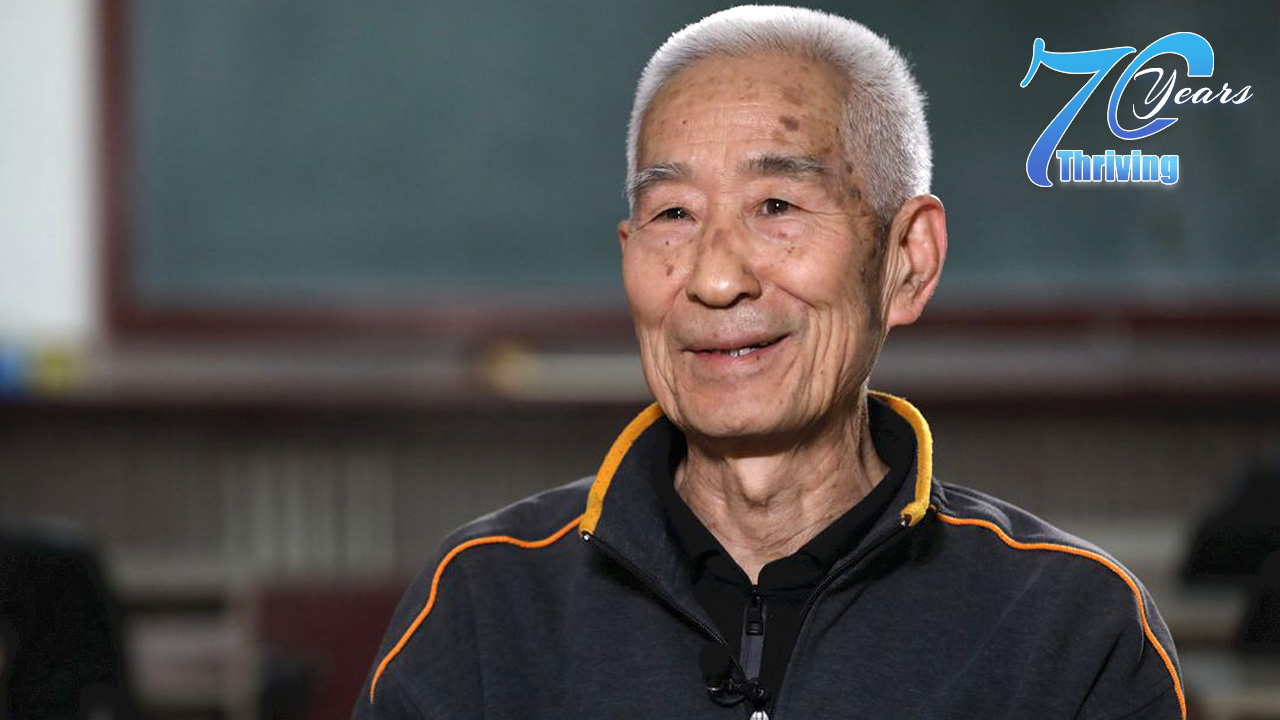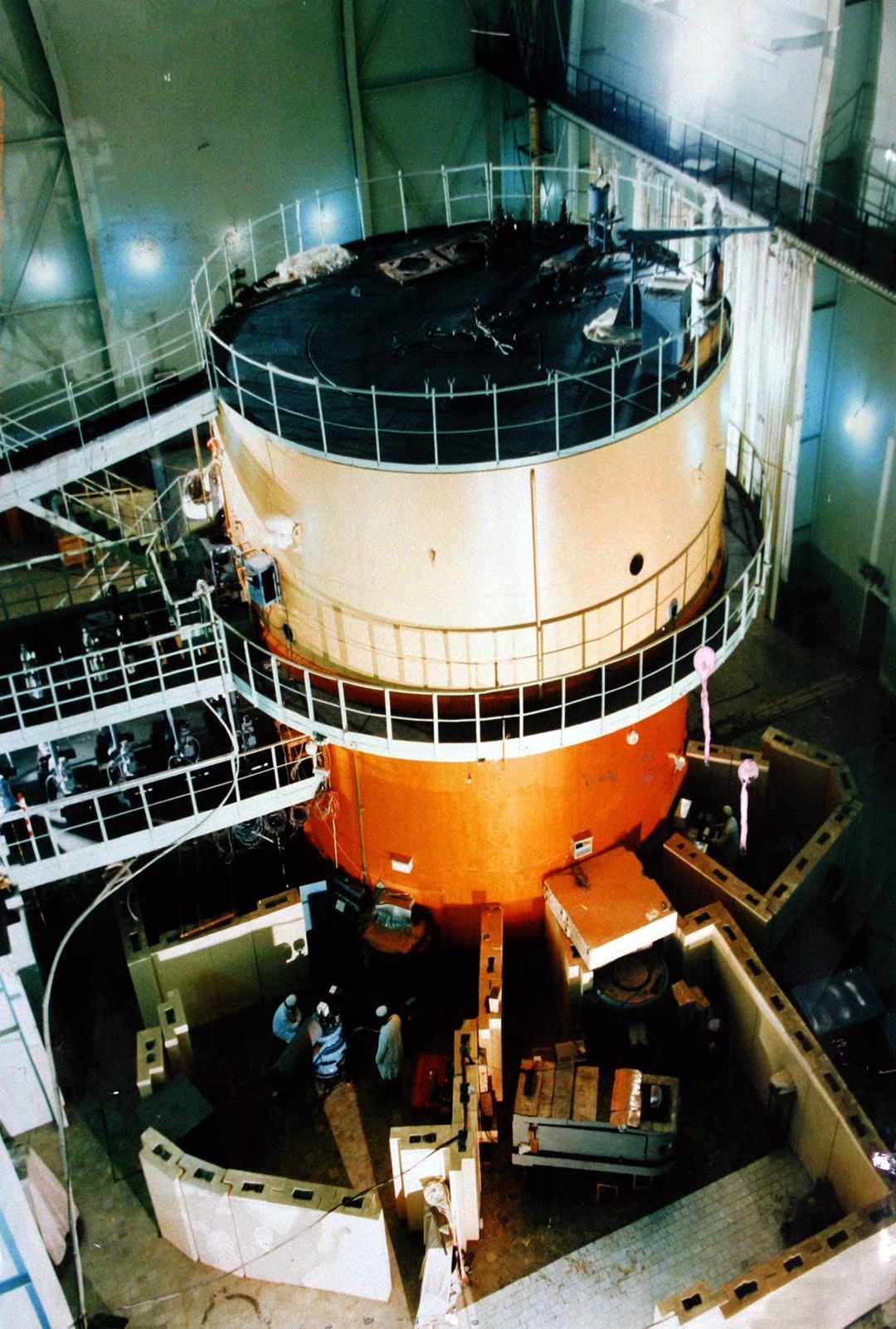
Technology
09:45, 10-May-2019
The unknown scientist behind China's nuclear competence
By Cao Qingqing

For almost seven decades, a nuclear research base located in a southwestern suburb of Beijing was little known even to residents in the surrounding area.
However, the China Institute of Atomic Energy (CIAE) is dubbed as the cradle of China's nuclear science and technology.
There, the country's nuclear research started from scratch. A cohort of top-notch scientists made historic contributions to China's development of "Two bombs and One submarine," namely the country's first atomic and hydrogen bombs, and the first nuclear submarine.
One of the unknown names behind these achievements is Zhang Wenhui, who has spent his life working on nuclear reactors.
Grasp of China's first nuclear reactor
After graduating from the University of Science and Technology of China in 1963, Zhang started his CIAE career.
His job was to study and master the country's first nuclear reactor, named 101 reactor, which was imported from the former Soviet Union in 1955.
It was in that year that the central government made the strategic decision to start developing atomic energy. The construction of necessary experimental devices, including the first nuclear reactor and cyclotron, was the very first step that laid the solid foundation for China's development of nuclear science and technology.

File photo of China's first nuclear reactor. /Photo provided by China Institute of Atomic Energy
File photo of China's first nuclear reactor. /Photo provided by China Institute of Atomic Energy
It took him almost 20 years to totally master every aspect of the reactor, during which his team also improved the system to make it function better.
The improved reactor made important contributions to China's first atomic and hydrogen bombs detonated in 1964 and 1967, and the first nuclear submarine that successfully underwent testing in 1971.
From importing technology to innovating
By the early 1970s, the major part of the 101 reactor had suffered a critical problem after operating for two decades, and Soviet experts believed it was about to retire. But after extensive discussions, the CIAE decided to revamp it.
"The heart of the reactor was broken," Zhang recalled, "some people suggested changing it into a more advanced one with Chinese characteristics."
Zhang and his team worked around the clock to carry out the renovation project.
After 18 months of hard work, the 101 reactor was revitalized with Chinese methods, and much better performance, higher safety level and wider applications. It provided important data for the test and design of China's first nuclear power plant – the Qinshan Nuclear Power Plant.
Because of their innovative job, Zhang and his team were awarded the first prize of the State Science and Technology Progress Award.

The medals of the State Science and Technology Progress Award Zhang Wenhui has won. /CGTN Photo
The medals of the State Science and Technology Progress Award Zhang Wenhui has won. /CGTN Photo
The revived reactor continued to function until 2007.
"Altogether, it operated for almost 50 years, and I'm more familiar with it than with my own body," Zhang said.
Construction of China's self-developed advanced reactor
In the early 1990s, the CIAE proposed to build a new research reactor, known as the China Advanced Research Reactor (CARR), to replace the 101 reactor when it retires.
This time, researchers at the CIAE were able to complete the design, construction, test and operation of the reactor all by themselves.
Zhang, with the outstanding expertise he accumulated over the years, once again devoted himself to the construction of the new reactor in his sixties.
Work on the CARR started in 2002 and was completed in 2012.

The China Advanced Research Reactor inside the China Institute of Atomic Energy. /Xinhua Photo
The China Advanced Research Reactor inside the China Institute of Atomic Energy. /Xinhua Photo
"So far, the reactor is the No.1 in Asia in terms of its performance indicators, and also one of the most advanced worldwide," Zhang told CGTN, adding that even Russian experts were amazed after a visit.
It is now one of the CIAE's four large-scale science platforms that provide researchers with unique conditions for fundamental research in nuclear science.
(Top image: Zhang Wenhui, an expert on nuclear reactors with China Institute of Atomic Energy, speaks to CGTN. /CGTN Photo)

SITEMAP
Copyright © 2018 CGTN. Beijing ICP prepared NO.16065310-3
Copyright © 2018 CGTN. Beijing ICP prepared NO.16065310-3